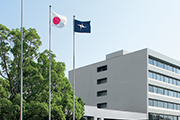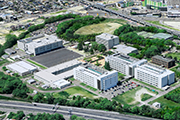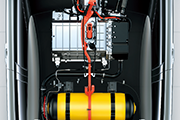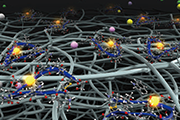Dynamic Operation of Two-stage CO2 Methanation Reactor
A study conducted by Shogo Sayama et al. was published in the Renewable Energy.
Considerable attention has been paid to CO2 methanation, in which industrial CO2 is converted into CH4 using H2. The hydrogen is produced by a water electrolyzer using solar photovoltaic and wind electricity. Because solar and wind outputs intrinsically fluctuate over time, the H2 production rate varies accordingly; however, CH4 production cannot fully follow these fluctuations. A buffer tank is installed between the electrolyzer and the CO2 methanation unit, which mitigates the variation of H2 provision rate to the CO2 methanation unit. The tank size varies depending on the time required for start-up and adjusting the CH4 production rate in the CO2 methanation unit.
To this end, this study suggested a fast start-up method of the CO2 methanation unit, combusting H2 for heating methanation catalysts rapidly. This method lighted off the methanation reaction in as less as 4 minutes while the conventional method by electrical heater required 26 minutes. Also, it was shown that a detailed catalyst temperature control can prevent the unexpected reaction termination during adjusting the CH4 production rate. These achievements can contribute to the realization of a zero-CO2-emission society.
Title: Dynamic Operation of Two-stage CO2 Methanation Reactor: Start-up by H2 Combustion and Load Change by Independent Control of Heat-carrier Flow Rate
Authors: Sayama, S., Yamamoto, S.
Journal Name: Renewable Energy
Published: February 1, 2025
https://doi.org/10.1016/j.renene.2025.122548


































